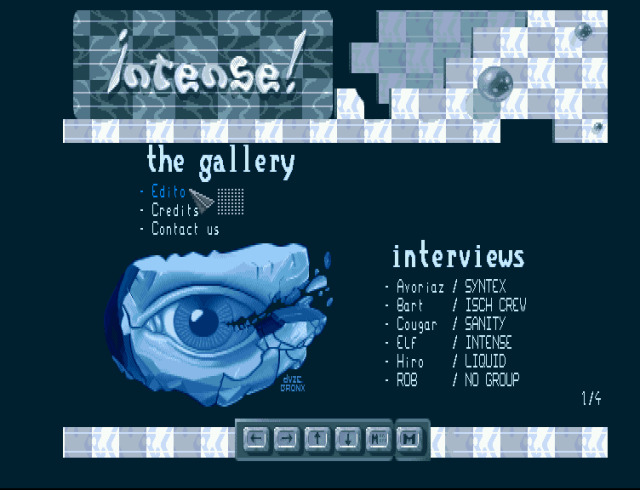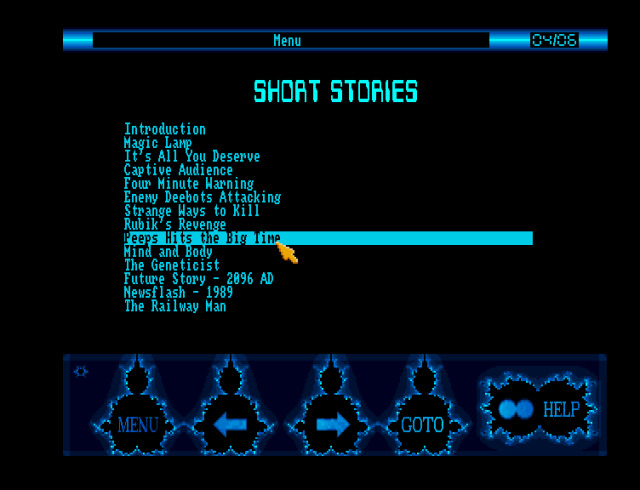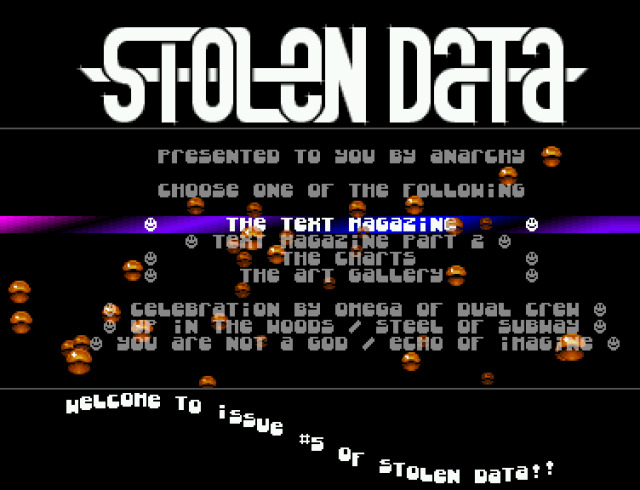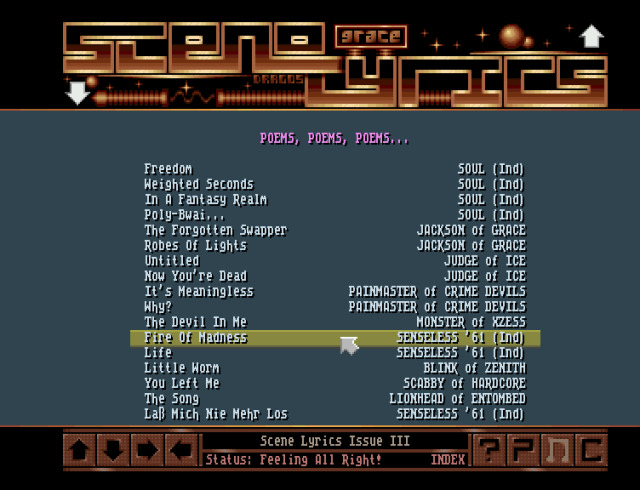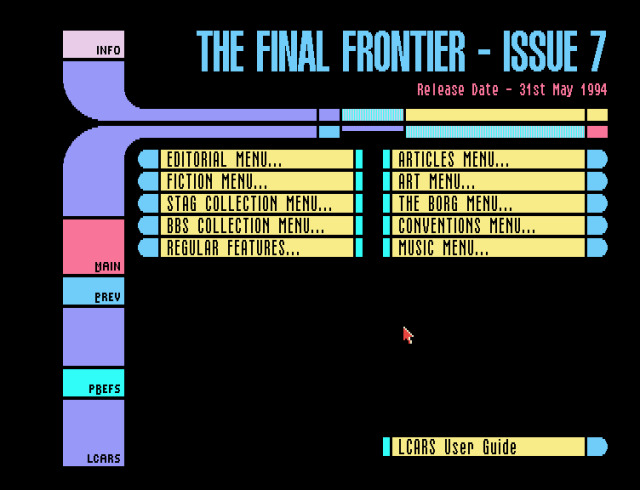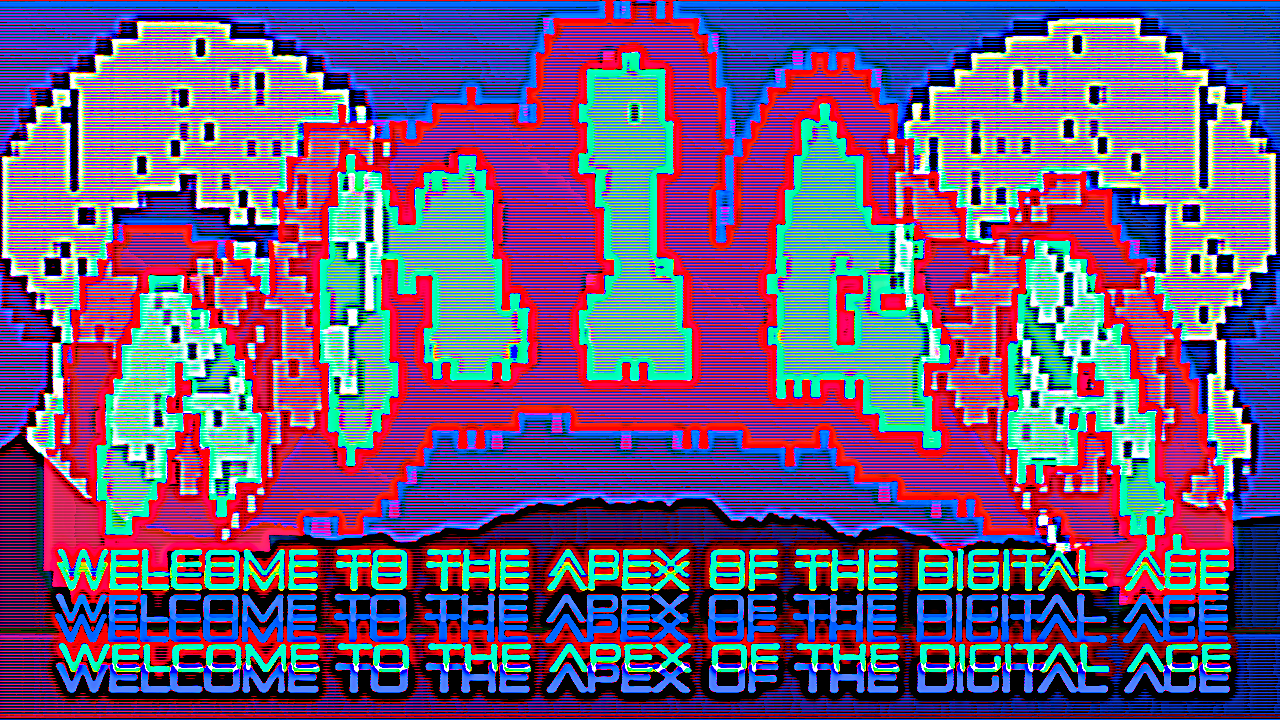
Amiga Diskmags were cool as hell.
Diskmags were cool as hell and the Amiga's might have been the coolest of all. You can really see the through line from fanzines, to these, to the fansites and blogs of the early web.
Diskmags were digital magazines made for old computers and distributed on floppy disks... usually. Electronic magazines for systems like the ZX Spectrum were often distributed on cassette as that was the medium that could reach the widest audience at the time. It took a while for floppy disks to catch on over here in the UK; shit was expensive!
While some mags were published by software houses and other corporations looking to advertise their products, the best remembered and best loved were made by enthusiasts and amateurs. The subject matter could be incredibly diverse with magazines covering subjects as varied as piracy, the demoscene, music, gaming, fandoms, and Satanism. Some diskmags were even collections of art, poetry, and short stories in the tradition of pulp magazines like Weird Tales. It was fairly common for diskmags to include lists of bulletin boards that you could dial if you had a modem, and BBSes were actually one of the ways you could learn about and order new diskmags to read, though old-fashioned DIY catalogues and ad-spots in print magazines were obviously very commonplace too. Modems were expensive before the web, especially if you wanted to dial a board in another country.

Diskmags for the 8-bit computers certainly had a lot to offer, but the Amiga was a special machine. It was the first truly mainstream multimedia home computer, with visual and audio capabilities that are legitimately mind-blowing for a home machine of its vintage. The original model, the A1000, was first launched in 1985 with the more popular and affordable A500 model arriving in early 1987. The aesthetic sensibilities and competitive nature of the Amiga scene came together in a big way to produce some truly beautiful software that would influence homebrew developers, cracktro makers, and tracker musicians for decades to come.
Diskmags were - alongside swappers and public domain libraries - one of the main ways that many members of the scene communicated with each other across international borders; they were how many beginning programmers got their start and how digital artists and electronic musicians first got their work out there in an era before the 'net was really accessible. Bulletin Boards were amazing, but the cost of dialling a foreign board could be steep and phreaking was becoming riskier and more difficult by the year. The letters pages, even more than the articles themselves, are a real time-capsule: a look into a subculture exactly as it was some 30-plus years ago; all full of scene drama, inside jokes, idle chatter, and debate. The letters pages were a meeting point for scene members who had no other way to connect, just like they were in the fanzines of decades prior.
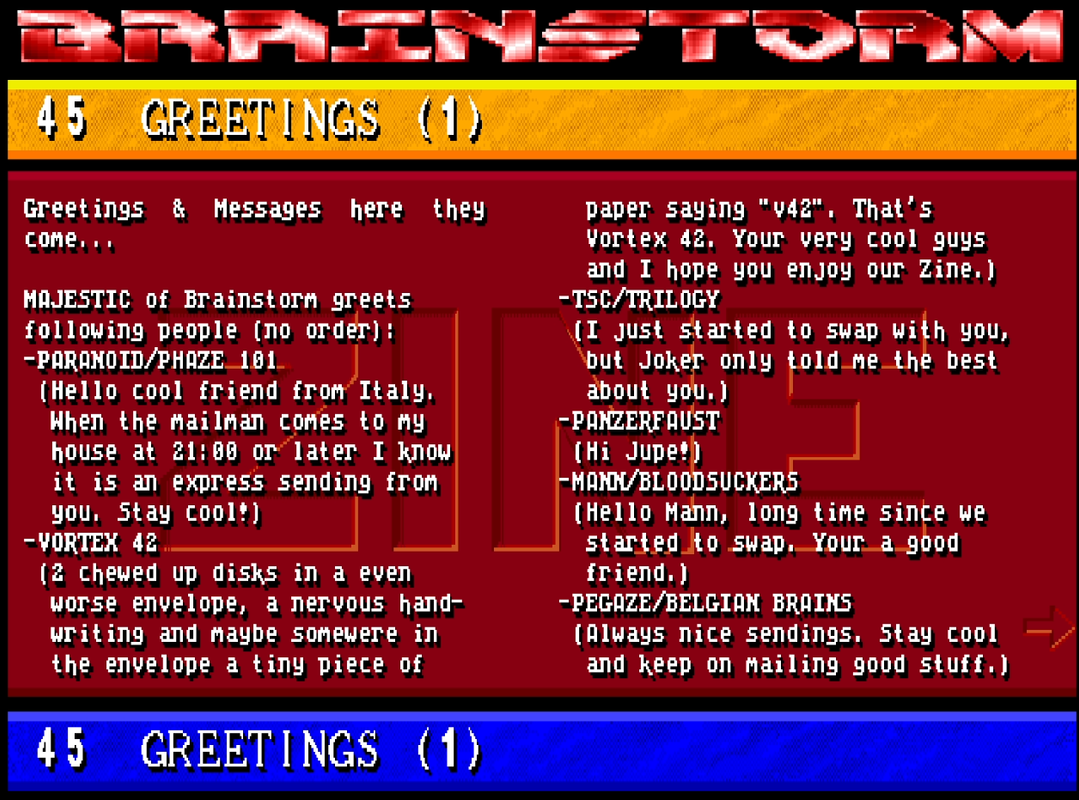
The aesthetic sensibilities of the scene are something I've always kind of fucked with and are the real reason for my interest in diskmags. Amiga software, especially the public domain and scene stuff, just looks so damn cool, ya know? Below are some images of my favourite-looking diskmags, as well as a link to the Internet Archive's full diskmag collection.
